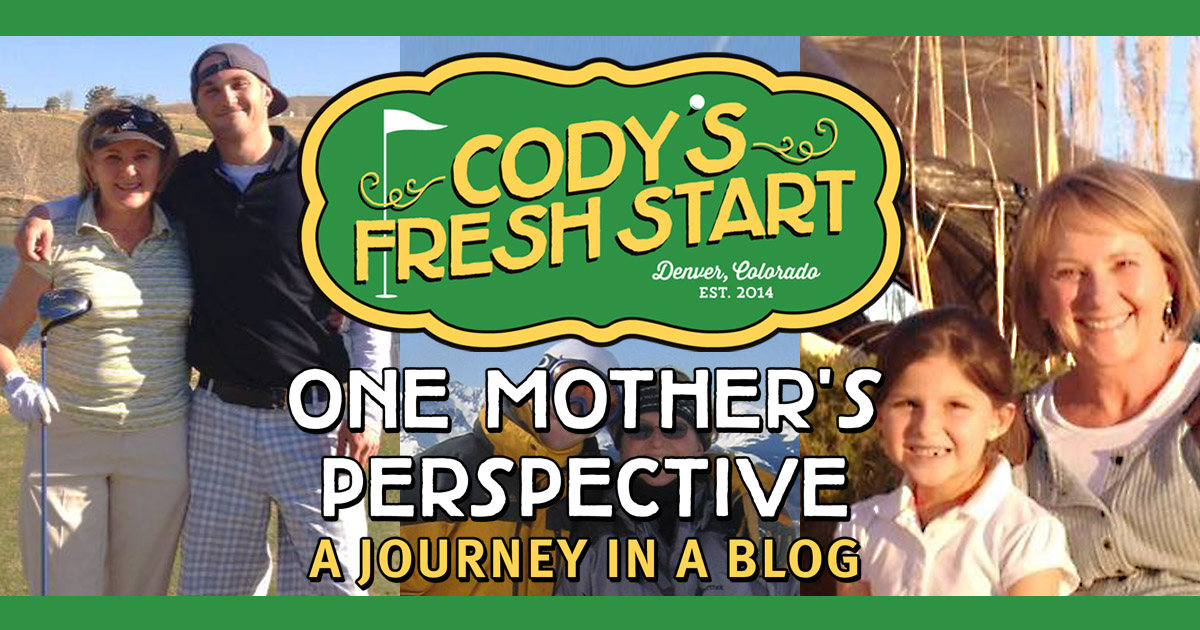By Mary Cucarola – 8/27/18
“Stay close, but out of the chaos.” Libby Cataldi, Author
Just as sobriety is the goal for someone afflicted with addiction, serenity is in and of itself a goal for the family member impacted by an addicted loved one.
Inside of that goal is the decision to avoid resentful and fearful thoughts about the actions caused by addictive behavior. Learning how to deal with very difficult situations by keeping a clear head and peaceful heart is at the core of recovery for the affected family member. Many times over the course of my son’s addiction, I had to remind myself that feelings are not facts.
Loving someone struggling with addiction can be incredibly difficult and chaotic. Because addiction impacts the whole family, treating the addicted person alone isn’t enough to create the lasting change needed in the family unit. There are tools and solutions available to family members to learn how to react differently to stressful situations involved with loving and living with an addicted loved one.
Addiction is truly a family disease.
Last month I devoted the entire blog to self-care. I discussed solutions and gave suggestions to help deal with focusing on yourself instead of your addicted loved one. It is available to read here: https://www.codysfreshstart.org/5-tips-for-families-dealing-with-addicted-loved-ones-tip-1/.
The rest of the tips for dealing with an addicted loved one are below. I never did any of these perfectly or even close to perfect, but hindsight is 20/20. I did the best I could with what I knew at the time. I have learned a lot since then and am in hopes it might help someone else who is struggling with an addicted loved one.
TIP #2. Strengthen the relationship with your addicted loved one and offer them an opportunity to change.
The goal is sobriety for your addicted loved one – deep down they want it, even if it may not seem like it. I can’t tell you the number of times Cody told me he hated being addicted to alcohol and drugs, even though he had a hard time staying sober. Instead of working on improving our relationship, I was always trying to fix him and his problems, when I should have been letting him fix them himself. Once, he told me I made him feel inept to take care of himself. I was hurting him more than helping him.
A key way to accomplish strengthening the relationship is through open and honest communication. The best questions are open-ended and nonjudgmental and convey a sense of acceptance and understanding. Focus on the good and try to diminish negative reactions. If they are open to treatment, help them find it. Don’t find it for them, but include them in finding the best treatment option for them. If they are invested in the solution, they will be more likely to work hard at it, follow the professional’s medical treatment plan, and get help from a recovery support group.
TIP #3. Set clear boundaries and don’t enable them to drink or use drugs.
Boundaries are for the family member, not the addicted loved one. Having interceded for so long on the addicted one’s behalf, constantly reacting, worrying, pleasing, covering up, or bailing them out of trouble, the family member takes on responsibilities that are not theirs. They become so enmeshed with another person’s life and problems to lose the sense of being separate individuals.
Confusing this absence of personal boundaries with love and caring, the family member ceases to live their own life.
Setting clear boundaries during periods of calm are a good idea, thinking rationally about what to accept and not accept. Boundaries represent reasonable ways to treat others and to be treated. One of the boundaries I set with my son was he couldn’t live with me unless he was sober. He hid his drug use from me for about 9 months in 2010, but when I found out I made him move out immediately. It was hard for me to do, but I did it because I couldn’t live with him shooting heroin in my home. It was for me, more than him. After he left, he ended up in treatment for a few days until a friend of his in Denver brought him drugs to rehab, then he lived out of his car for 6 weeks, then he went to jail, and then to long-term treatment.
Boundaries help to clarify the distinction between helping your addicted loved one or enabling them. Enabling is a sign of poor boundaries where the family member will make excuses, blame themselves, focus on reducing short-term pain, and unintentionally reinforce drug use. Strong boundaries may increase conflict, but they will not allow manipulation by the addict, which increases the willingness to seek treatment.
TIP #4. Stay close, but don’t constantly rescue them. You can love them without losing yourself in them.
Genuine, healthy love isn’t self-destructive. It doesn’t diminish or strip identities, not does it diminish those you love. Love is nourishing; it allows each of us to be more fully ourselves. Losing yourself in your addicted loved one does just the opposite.
So, the challenge is to stay close, but disentangle from the messiness of addiction – out of the way of the insanity. The insanity is the addict’s lies, manipulation, chaos, dishonesty, and the enabler’s constant rescuing of the addict. It’s a vicious cycle that needs to be broken at some point. I had a lot of trouble with this challenge. I completely lost myself in my son’s addiction and did rescue him often. The fear of watching him fail so completely was frightening and I did a lot of threatening, forcing and handwringing, which never succeeded. This fear caused me to not allow him to face all of his consequences.
The overall emotional environment needs to be more honest, compassionate, and less stressed. This encourages safety for both parties involved and trust starts to emerge with time and consistency. Safety allows connection and honesty. There is an entire book I highly recommend devoted to this subject called “Stay Close – A Mother’s Story of her Son’s Addiction” by Libby Cataldi.
TIP #5. Know there is a very real chance of incarceration, overdose, or death with opiate addiction.
Unfortunately, this is the nature of opiate addiction. Many addicts get in too deep in the confines of jail, overdose and even worse death. It does not matter whether an opiate addict hails from a healthy or unhealthy background. Once addiction takes hold, the risks are present.
The day I found out my son was using heroin was one of the worst days of my life. I knew it was the most addictive drug on the planet and he was now in a whole different ball game with his addiction. This was going to get worse, much worse, and I had no idea what to do about it. I felt so helpless and lost. It was at this point in my life that I moved to the mountains in Telluride, Colorado to try to get a handle on my own life, which was a complete mess.
The average life span of an opiate addict is considerably less than that of a healthy person. You rarely see opiate addicts in their 40s or 50s. I am not an advocate of tough love with opiate addiction – love with boundaries, but not tough love.
For those with opiate addiction, the only viable option is sobriety.
Mary Cucarola – 8/27/18

